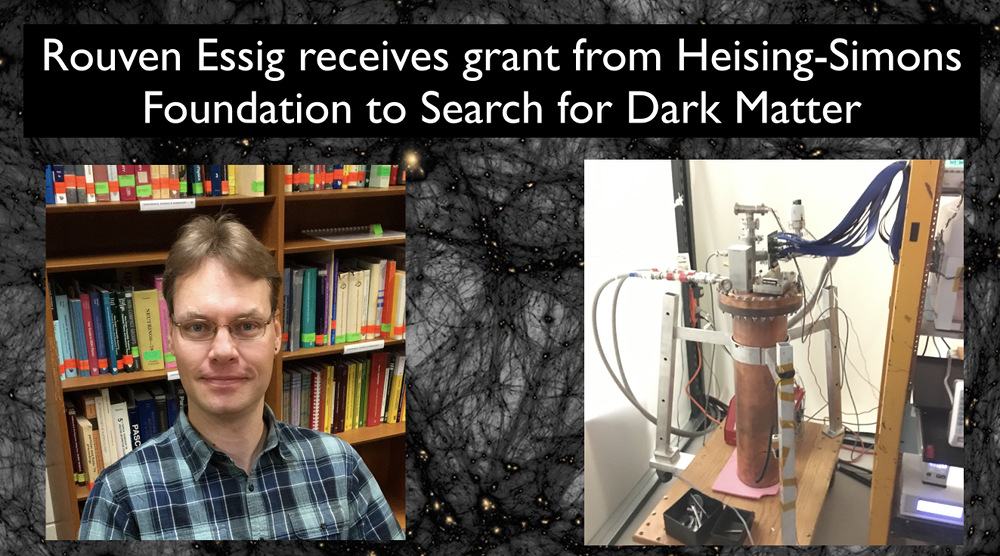![]() Uncovering the identity of dark matter, which makes up about 85% of the matter in the Universe, is among the most important goals of particle physics today. YITP faculty member Rouven Essig, in collaboration with Javier Tiffenberg (Fermilab), has received nearly $1-million from the Heising-Simons Foundation for the SENSEI experiment. SENSEI (Sub-Electron Noise Skipper-CCD Experimental Instrument) is a novel, ultra-sensitive, table-top direct-detection experiment that will search for two compelling classes of dark matter: Hidden-Sector Dark Matter with MeV-to-GeV masses and Ultralight Dark Matter with eV-to-keV masses. These two classes of dark matter are scientifically well-motivated but remarkably under-explored, and have been receiving increasing attention over the last few years.
Uncovering the identity of dark matter, which makes up about 85% of the matter in the Universe, is among the most important goals of particle physics today. YITP faculty member Rouven Essig, in collaboration with Javier Tiffenberg (Fermilab), has received nearly $1-million from the Heising-Simons Foundation for the SENSEI experiment. SENSEI (Sub-Electron Noise Skipper-CCD Experimental Instrument) is a novel, ultra-sensitive, table-top direct-detection experiment that will search for two compelling classes of dark matter: Hidden-Sector Dark Matter with MeV-to-GeV masses and Ultralight Dark Matter with eV-to-keV masses. These two classes of dark matter are scientifically well-motivated but remarkably under-explored, and have been receiving increasing attention over the last few years.
Motivated by theoretical work by Prof. Essig and his collaborators, SENSEI will search for dark matter particles that scatter off, or are absorbed by, electrons. SENSEI has unprecedented sensitivity to the resulting tiny ionization signals, allowing it to probe orders of magnitude of unexplored dark-matter parameter space. The grant from the Heising-Simons Foundation will enable an experiment consisting of 100-grams of special silicon CCDs, called “Skipper-CCDs”. In contrast to most particle physics experiments, it is truly “table-top” in size. A prototype consisting of less than 0.1 gram is currently taking data at Fermilab.
Prof. Essig's collaborators on SENSEI include his former postdoc Tien-Tien Yu (now at Oregon), Tomer Volansky (Tel-Aviv), as well as Juan Estrada, Miguel Sofo-Haro, and Javier Tiffenberg (Fermilab), His theory collaborators include Prof. Marivi Fernandez Serra and her former student Adrián Soto (Stony Brook), as well as Jeremy Mardon, Volansky, and Yu.

